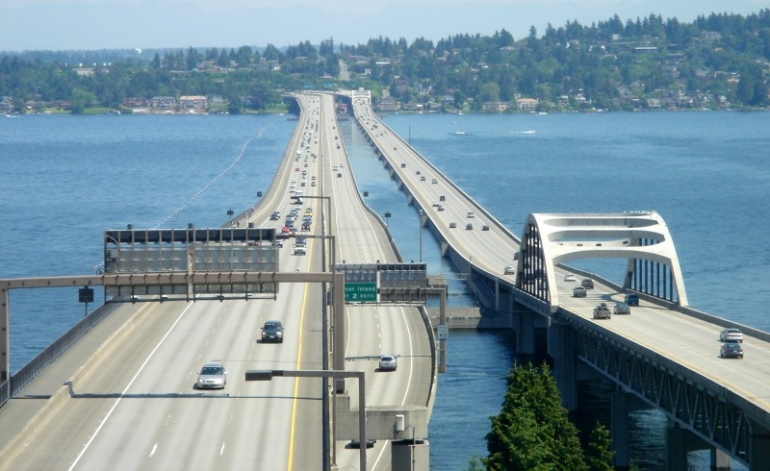Bridge Physics
[caption id="attachment_244297" align="aligncenter" width="505" caption="Golden Gate, a suspension bridge (Doc: www.visitingdc.com)"][/caption]
So you’re making a bridge here out of glued together sticks. How sure are you that your bridge won’t fall over a silly wind? And will it still stand while holding many cars and trucks passing daily? Well, a stick bridge wouldn’t be able to do that I suppose, for many reasons too. And because of that, there aren’t many stick bridges holding cars together.
Bridges on stilts aren’t that common because they aren’t flexible. Why would you want a flexible bridge? Mainly because of wind. A little wind and the bridge would snap and come crumbling down. Now we wouldn’t want a super highway full of cars snap, would we? We have to expect that something bad is about to happen, so we can prepare for it naturally.
Some bridges can withstand earthquakes. How do they do this? Because they are flexible. A suspension bridge relies on its suspenders to hold it up right. Now that isn’t an easy job to do. That’s why there are lots of them in a row on both sides of the bridge. They’re quite strong too, made of steel that is both strong and flexible.
[caption id="attachment_244299" align="aligncenter" width="435" caption="Bridge Diagram (Doc: www.swe.org)"]

A bridge must be able to stand tension, suspension and compression. With all of those out of the way and it’s still standing, then you have yourself a mighty fine bridge. Tension is the force pulling outwards while compression is the force inwards, into the bridge’s center. Both if not looked into properly, can cause fatal damage. Too much tension can lead to snapping while too much compression can lead to grappling.
If you don’t want to worry about tension and compression too much, there’s always a beam bridge. Beam bridges don’t need suspenders to hang it upright. Instead, they have a row of piers below them that help the bridge stand up. These piers or pillars every few meters decrease the tension between them. They’re sturdier because of that. In fact, if you fill the bottom part of the bridge so that nothing is below it, it would become even sturdier. But then again, it wouldn’t be a bridge anymore, now would it?
But there’s a down side to beam bridges if you haven’t spotted it already. If you build one over a river, ships would have difficulties passing through because of those viaducts or piers or pillars or whatever you call them. That’s why for wide rivers, bridge engineers and architects prefer building suspension, arch or cable swayed bridges that leave a wide open space between them for ships to pass and even giant cruise ships once in a while. They wouldn’t want to risk the casualties. Even if the ship went slowly beneath a beam bridge, the momentum of a big enough ship could bring down the whole bridge. Not a pretty sight.
[caption id="attachment_244301" align="aligncenter" width="441" caption="I 90, a floating bridge (Doc: commons.wikimedia.org)"]

If you think bridges couldn’t get any cooler than that, think again. Science keeps on rolling and so does technology. Ever heard of a floating bridge? Me neither. Well, before that is. A floating bridge is a bridge that uses pontoons beneath it to float. This type of bridge can withstand a full superhighway. And it really does float! No support from viaducts at all. Some are in the planning to being made while others are already open for business.
We may still be using cars for the few centuries ahead of us, but at least we get to do it in style (with bridges of course). Thanks for reading!
http://www.wsdot.wa.gov/projects/sr520bridge/questions.htm#PontoonFacts
http://science.howstuffworks.com/engineering/civil/bridge3.htm
Baca konten-konten menarik Kompasiana langsung dari smartphone kamu. Follow channel WhatsApp Kompasiana sekarang di sini: https://whatsapp.com/channel/0029VaYjYaL4Spk7WflFYJ2H









